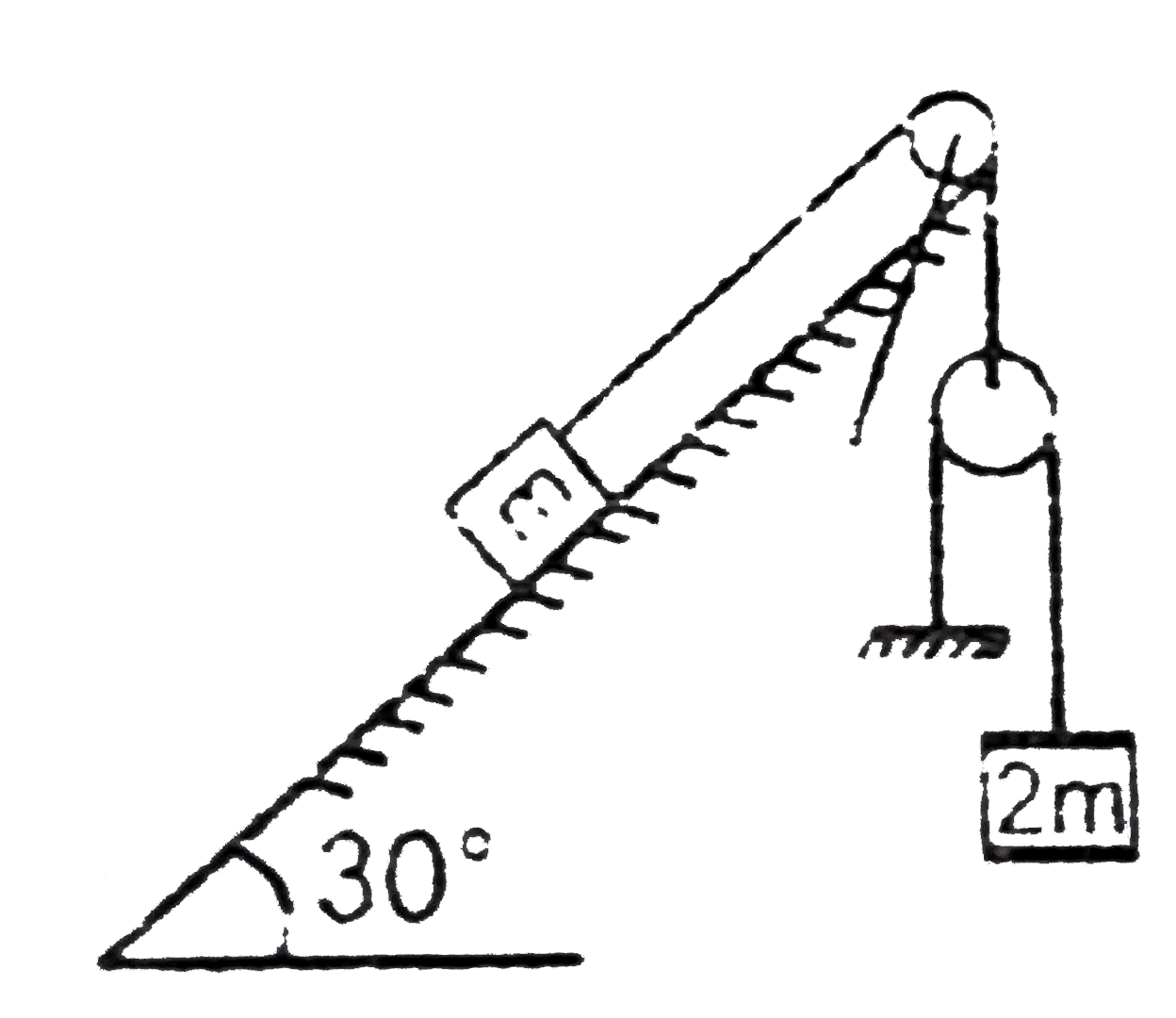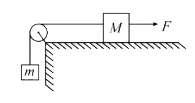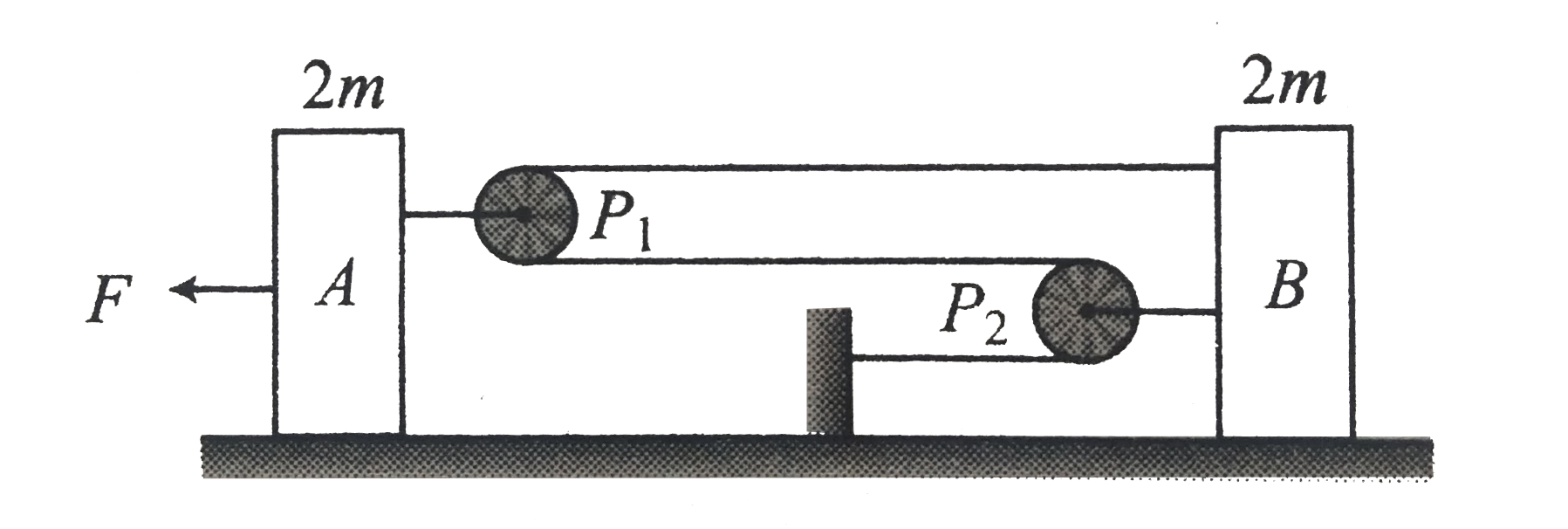Calculate the acceleration of the block B in the figure assuming the surfaces and the pulleys P1 and P2 are all smooth and pulleys and string are lighttake F = 17N and m = 1kg
Related Solutions
Figure shows an arrangement of pulleys and two blocks. All surfaces are frictionless . All pulleys and strings are massless. All string are smooth and massless. The acceleration of block A is :
View SolutionFigure shows an arrangement of pulleys and two blocks. All surfaces are frictionless . All pulleys and strings are massless. All string are smooth and massless. The acceleration of block A is :
View SolutionIn the figure all pulleys (P1, P2, P3 …….) are massless and all the blocks (1,2,3 …..) are identical, each having mass m. The system consist of infinite number of pulleys and blocks. Strings are light and inextensible and horizontal surfaces are smooth. Pulley P1 is moved to left with a constant acceleration of a0. Find the acceleration of block1. Assume the strings to remain horizontal.
View SolutionCalculate the acceleration of the block B of the figure Fig. 5.23, assuming surfaces and pulleys to be smooth.
View SolutionFind the acceleration of the block B in the above figure, assuming the surfaces and the pulleys are all smooth.

View SolutionFind the acceleration of the block B in the above figure, assuming the surfaces and the pulleys are all smooth.

View SolutionIn the figure shown,assuming the horizontal surface to be smooth and (g=10ms^(-2)) ,if the pulleys and the strings connecting are ideal,then acceleration of the block (3.0Kg)" is
View SolutionConsider the situation shown in figure .Both the pulleys and the string and light and all the surfaces are smooth. (a) Find the acceleration of 1kg block. (b) Find the tension in the string. (g = 10 m//s^(2)) .
View SolutionConsider the situation shown in figure .Both the pulleys and the string and light and all the surfaces are smooth. (a) Find the acceleration of 1kg block. (b) Find the tension in the string. (g = 10 m//s^(2)) .
View SolutionIn the system shown in the figure all surfaces are smooth, pulley and string are massless. The string between the two pulleys and between pulley and block of mass 5 m is parallel to the incline surface of the block of mass 4 m. The system is released from rest. Find the acceleration of the block of mass 4 m . ["tan" 37^(@) = (3)/(4)]
View SolutionIn the given figure inclined surface and pulleys are smooth. Strings and pulleys are massless. Acceleration of mass m is :

View SolutionIn the given figure inclined surface and pulleys are smooth. Strings and pulleys are massless. Acceleration of mass m is :

View SolutionPulleys and strings are massless. The horizontal surface is smooth. What is the acceleration of the block
View SolutionIn the figure shown, all surfaces are smooth and the pulley is massless. A constant force of magnitude is acting on the block of mass M. The acceleration of the block M is :

View SolutionIn the figure shown, all surfaces are smooth and the pulley is massless. A constant force of magnitude F = (mg)/(2) is acting on the block of mass M. The acceleration of the block M is :
View SolutionConsider the situation shown in the figure. The surface is smooth and the string and the pulley are light. Find the acceleration of each block and tension in the string.

View SolutionConsider the situation shown in the figure. The surface is smooth and the string and the pulley are light. Find the acceleration of each block and tension in the string.
View SolutionThe acceleration of the block B in fig. Assuming the surfaces and the pulley and are all smooth, is

View SolutionThe acceleration of the block B in fig. Assuming the surfaces and the pulley P_(1) and P_(2) are all smooth, is
View SolutionFind the acceleration of the 6 kg block in the figure. All the surfaces and pulleys are smooth. Also the strings are inextensible and light. [Take ]
 .
.
View Solution